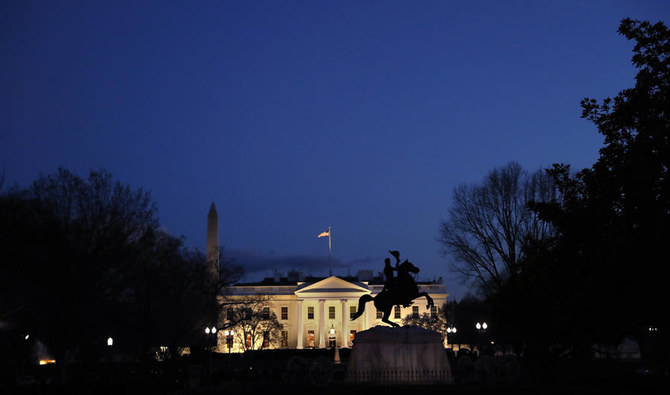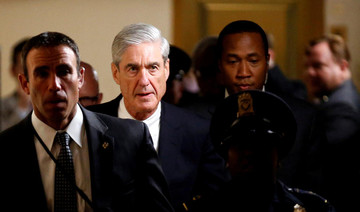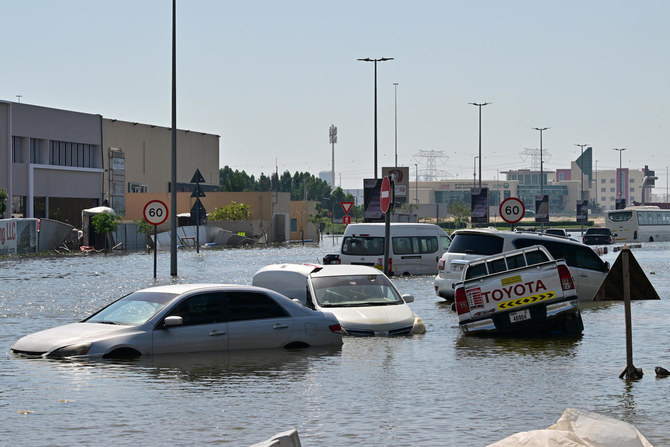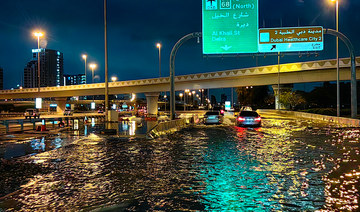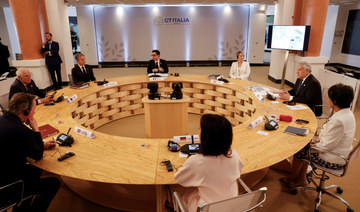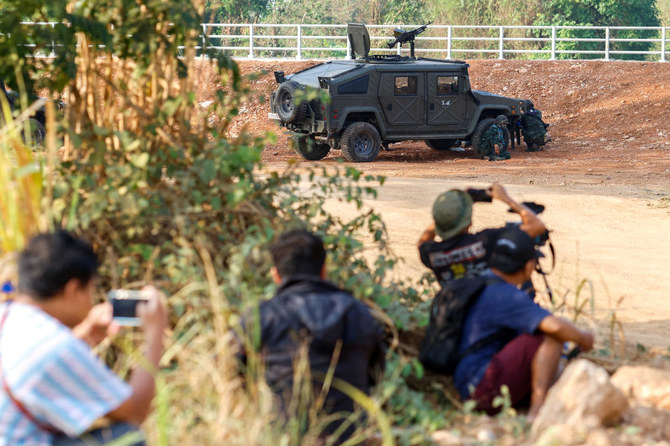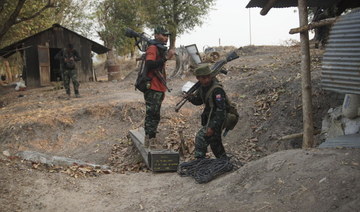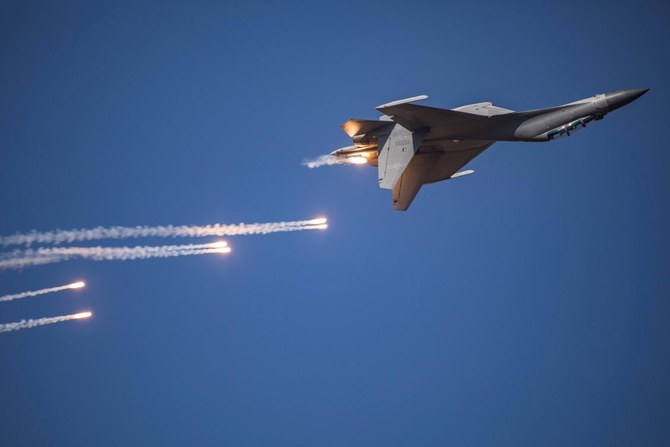WASHINGTON: Special counsel Robert Mueller closed his long and contentious Russia investigation with no new charges Friday, ending the probe that has cast a dark shadow over Donald Trump’s presidency but launching a fresh wave of political battles over the still-confidential findings.
The report’s details remained a mystery, accessible to only a handful of Justice Department officials while Attorney General William Barr prepared to release the “principal findings” soon. But the closure of the 22-month probe without additional indictments by Mueller was welcome news to some in Trump’s orbit who had feared a final round of charges could ensnare more Trump associates, including members of the president’s family.
The Justice Department said the report was delivered by a security officer Friday afternoon to the office of Deputy Attorney General Rod Rosenstein, and then it went to Barr. Word of the delivery triggered reactions across Washington, including Democrats’ demands that it be quickly released to the public and Republicans’ contentions that it ended two years of wasted time and money.
The next step is up to Barr, who is charged with writing his own account of Mueller’s findings and sending it to Congress. In a letter to lawmakers , he declared he was committed to transparency and speed. He said he could provide details as soon as this weekend.
The White House sought to keep some distance from the report, saying it had not seen or been briefed on the document. Trump, surrounded by advisers and political supporters at his resort in Florida, stayed uncharacteristically quiet on Twitter.
With no details released at this point, it’s not known whether Mueller’s report answers the core questions of his investigation: Did Trump’s campaign collude with the Kremlin to sway the 2016 presidential election in favor of the celebrity businessman? Also, did Trump take steps later, including by firing his FBI director, to obstruct the probe?
But the delivery of the report does mean the investigation has concluded without any public charges of a criminal conspiracy between the campaign and Russia, or of obstruction by the president. A Justice Department official confirmed that Mueller was not recommending any further indictments.
That person, who described the document as “comprehensive,” was not authorized to discuss the probe and asked for anonymity.
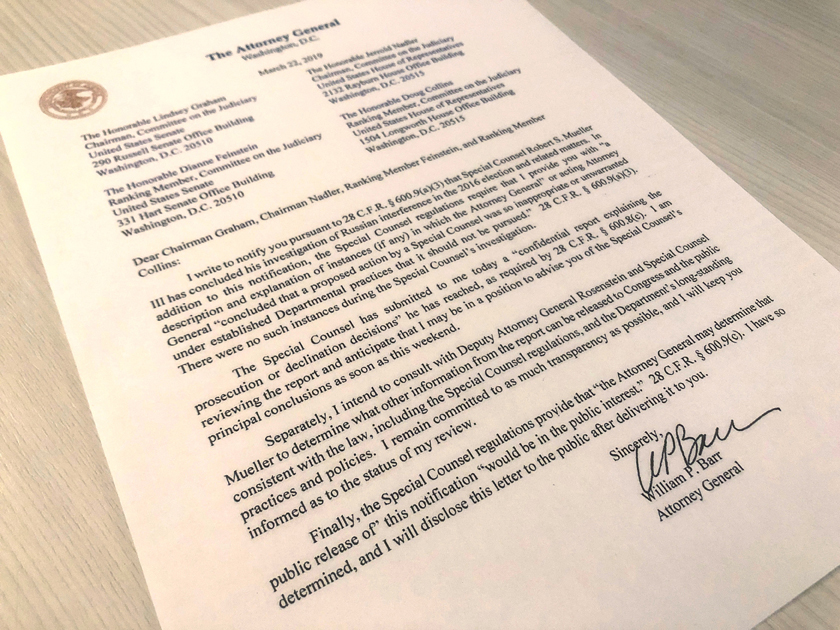
S Attorney General William Barr’s letter to US lawmakers stating that the investigation by Special Counsel Robert Mueller has been concluded and that Mueller has submitted his report to the Attorney General. (REUTERS/Jim Bourg)
That’s good news for a handful of Trump associates and family members dogged by speculation of possible wrongdoing. They include Donald Trump Jr., who had a role in arranging a Trump Tower meeting at the height of the 2016 election campaign with a Kremlin-linked lawyer, and Trump’s son-in-law, Jared Kushner, who was interviewed at least twice by Mueller’s prosecutors. It wasn’t immediately clear whether Mueller might have referred additional investigations to the Justice Department.
All told, Mueller charged 34 people, including the president’s former campaign chairman, Paul Manafort, his first national security adviser, Michael Flynn, and three Russian companies. Twenty-five Russians were indicted on charges related to election interference, accused either of hacking Democratic email accounts during the campaign or of orchestrating a social media campaign that spread disinformation on the Internet. Five Trump aides pleaded guilty and agreed to cooperate with Mueller and a sixth, longtime confidant Roger Stone, is awaiting trial on charges that he lied to Congress and engaged in witness tampering.
It’s unclear what steps Mueller might take if he uncovered what he believes to be criminal wrongdoing by Trump, in light of Justice Department legal opinions that have held that sitting presidents may not be indicted.
In his letter to lawmakers, Barr noted the Justice Department had not denied any request from the special counsel, something Barr would have been required to disclose to ensure there was no political inference. Trump was never interviewed in person, but submitted answers to questions in writing.
The mere delivery of the confidential findings set off swift, full-throated demands from Democrats for full release of Mueller’s report and the supporting evidence collected during the sweeping probe. As Mueller’s probe has wound down, Democrats have increasingly shifted their focus to their own investigations, ensuring the special counsel’s would not be the last word on the matter.
House Speaker Nancy Pelosi and Senate Minority Leader Chuck Schumer declared it “imperative” to make the full report public, a call echoed by several Democrats vying to challenge Trump in 2020.
“The American people have a right to the truth,” Schumer and Pelosi said in a joint statement.
Democrats also expressed concern that Trump would try to get a “sneak preview” of the findings.
“The White House must not be allowed to interfere in decisions about what parts of those findings or evidence are made public,” they said in a joint statement.
It was not clear whether Trump would have early access to Mueller’s findings. Spokeswoman Sarah Sanders suggested the White House would not interfere, saying “we look forward to the process taking its course.” But Trump’s personal attorney, Rudy Giuliani, told The Associated Press Friday that the legal team would seek to get “an early look” before they were made public.
Giuliani said it was “appropriate” for the White House to be able “to review matters of executive privilege.” He said had received no assurances from the Department of Justice on that front. He later softened his stance, saying the decision was “up to DOJ and we are confident it will be handled properly.”
The White House did receive a brief heads-up on the report’s arrival Friday. Barr’s chief of staff called White House Counsel Emmet Flood Friday about 20 minutes before sending the letter went to the Republican and Democratic leaders of the Senate and House Judiciary committees.
The chairman of the Senate panel, Lindsey Graham of South Carolina, was keynote speaker Friday night at a Palm Beach County GOP dinner at Trump’s Mar-a-Lago resort. Early in the evening, the president appeared on a balcony to wave at the crowd of more than 600 enjoying cocktails and appetizers by the pool, according to party vice-chairwoman Tami Donnally, who attended the event.
Barr has said he wants to make as much public as possible, but any efforts to withhold details is sure to prompt a tussle between the Justice Department and lawmakers who may subpoena Mueller and his investigators to testify before Congress. Rep. Adam Schiff, D-California, threatened a subpoena Friday.
Such a move would likely be vigorously contested by the Trump administration.
The conclusion of Mueller’s investigation does not remove legal peril for the president . Trump faces a separate Justice Department investigation in New York into hush money payments during the campaign to two women who say they had sex with him years before the election. He’s also been implicated in a potential campaign finance violation by his former lawyer, Michael Cohen, who says Trump asked him to arrange the transactions. Federal prosecutors, also in New York, have been investigating foreign contributions made to the president’s inaugural committee.
No matter the findings in Mueller’s report, the investigation has already illuminated Russia’s assault on the American political system, painted the Trump campaign as eager to exploit the release of hacked Democratic emails and exposed lies by Trump aides aimed at covering up their Russia-related contacts.
The special counsel brought a sweeping indictment accusing Russian military intelligence officers of hacking Democrat Hillary Clinton’s campaign and other Democratic groups during the 2016 campaign. He charged another group of Russians with carrying out a large-scale social media disinformation campaign against the American political process that also sought to help Trump and hurt Clinton.
Mueller also initiated the investigation into Michael Cohen, the president’s former lawyer, who pleaded guilty in New York to campaign finance violations arising from the hush money payments and in the Mueller probe to lying to Congress about a Moscow real estate deal. Another Trump confidant, Stone, is awaiting trial on charges that he lied about his pursuit of Russian-hacked emails ultimately released by WikiLeaks.
Mueller has also been investigating whether the president tried to obstruct the investigation. Since the special counsel’s appointment in May 2017, Trump has increasingly tried to undermine the probe by calling it a “witch hunt” and repeatedly proclaiming there was “NO COLLUSION” with Russia.
But one week before Mueller’s appointment, Trump fired FBI Director James Comey, later saying he was thinking of “this Russia thing” at the time.




